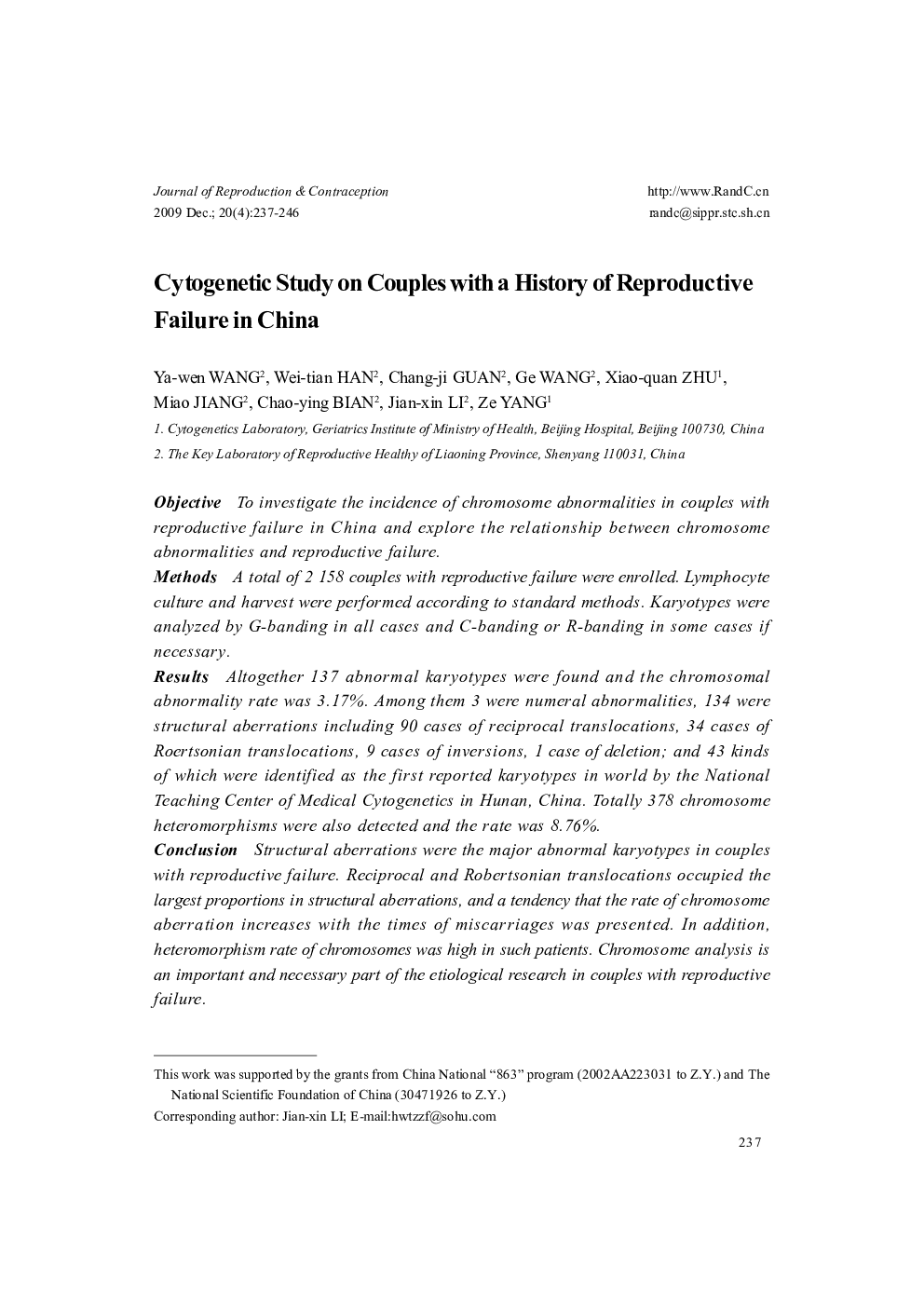| Article ID | Journal | Published Year | Pages | File Type |
|---|---|---|---|---|
| 3964335 | Journal of Reproduction and Contraception | 2009 | 10 Pages |
ObjectiveTo investigate the incidence of chromosome abnormalities in couples with reproductive failure in China and explore the relationship between chromosome abnormalities and reproductive failure.MethodsA total of 2 158 couples with reproductive failure were enrolled. Lymphocyte culture and harvest were performed according to standard methods. Karyotypes were analyzed by G-banding in all cases and C-banding or R-banding in some cases if necessary.ResultsAltogether 137 abnormal karyotypes were found and the chromosomal abnormality rate was 3.17%. Among them 3 were numeral abnormalities, 134 were structural aberrations including 90 cases of reciprocal translocations, 34 cases of Roertsonian translocations, 9 cases of inversions, 1 case of deletion; and 43 kinds of which were identified as the first reported karyotypes in world by the National Teaching Center of Medical Cytogenetics in Hunan, China. Totally 378 chromosome heteromorphisms were also detected and the rate was 8.76%.ConclusionStructural aberrations were the major abnormal karyotypes in couples with reproductive failure. Reciprocal and Robertsonian translocations occupied the largest proportions in structural aberrations, and a tendency that the rate of chromosome aberration increases with the times of miscarriages was presented. In addition, heteromorphism rate of chromosomes was high in such patients. Chromosome analysis is an important and necessary part of the etiological research in couples with reproductive failure.
